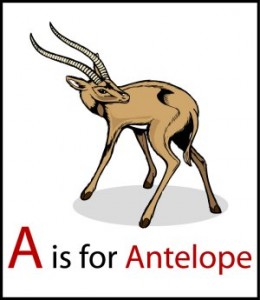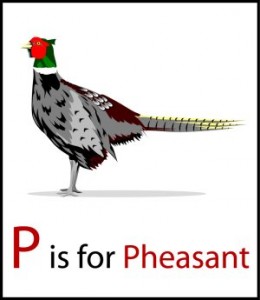In Part I we looked at what antibiotics are, how they work and why and where they are used. We also looked at how they are abused and over-used and touched on some of the consequences and implications. (Click here to read Part I)
In this Newsletter we will go further and look at how bacteria fight back and what it means for human health and the future of antibiotics.
How does resistance work?
Look at the figure above. Let’s imagine for the moment that your immune system hasn’t done its job properly and that the cut on your finger from last week has become badly infected with bacteria. This is represented in the top panel with the infecting bacteria shown by the blue dots. The Doctor in the hospital can see the extent of the infection and realises that if something isn’t done you could lose the finger and that the infection will spread into the hand and up the arm. To stop the infection the Doctor gives you Antibiotic A to kill the bacteria. This it does very effectively, killing all the blue cells. However, due to genetic variability, one of these blue cells happens to have a mutation or additional piece of DNA that gives it resistance to Antibiotic A. This cell has been shown in green. Even though Antibiotic A has done a good job, if your immune system doesn’t finish the task and kill the cells the antibiotic missed, this green cell will grow. Being resistant to Antibiotic A, this single green cell will multiply even in the presence of Antibiotic A to eventually occupy all the space the blue cells previously did. When it does, the infection will be just as bad as it was before. Again, the Doctor prescribes Antibiotic A. After all, it worked last time. Unfortunately, this time all the cells are resistant to Antibiotic A, so nothing happens, no matter how high a dose is used. So the Doctor has no choice but to prescribe Antibiotic B, a stronger, more potent drug with potentially more side effects. Antibiotic B does its job, killing off all the green cells. However, not all the green cells are exactly the same and one of them contains a mutation that makes it resistant to Antibiotic B, represented by the red cell. Again, if the immune system doesn’t step in and finish the job then the resistant cell again grows and the infection returns. This time, neither Antibiotic A nor B work, so the Doctor must resort to Antibiotic C, an even stronger drug with some very unpleasant side effects. Antibiotic C works but, lurking in a corner…
As you can see, the process is surprisingly simple. The presence of the antibiotic favours the growth of resistant populations and as more and more antibiotics are used, so the relative number of bacteria within the population that are resistant to these antibiotics increases. Simply put, the bacteria learn how we are attacking them and develop counter measures that they pass on to future generations. And the more we attack them; the better and more sophisticated these counter measures become. This is the essence of natural selection.
As the process of natural selection is a universal rule governing all living things, it is important to understand that these basic principles will apply to any other situation where resistance may develop, be it resistance by bacteria to an antibiotic, by a caterpillar to a pesticide or by cancer cells to chemotherapy.
What are “More sophisticated counter measures”?
Have a look at the following pictures and see if you can tell what these animals have in common:




They all have the letters “ant” somewhere in their name. The trick is you need to know how to read to work it out.Give up?
Anyone who has taught a child to read would be familiar with the following situation. Going through a picture book it doesn’t take much prompting before a child can recognise the elephant every time by its picture. Similarly, it won’t be long before they will also instantly recognise the antelope or pheasant or anteater by sight. The written names initially have no meaning for the child, as they do not understand what the letters are or that they have meaning. So no matter how good the child may be at recognising the animals by sight, they have no idea that they have anything in common. For that, they need a higher level of sophistication: The ability to read.
In the early days of antibiotic use, resistance was rather like the process above, where the bacteria could recognise the antibiotic by its overall shape, not by its parts. Change the overall shape, even though the fundamental building blocks were the same and the bacteria could no longer recognise it. So if penicillin didn’t work you could always use other members of the penicillin family like ampicillin, amoxicillin, dicoxacillin, flucloxacillin, methicillin (now seldom used), or the heavy hitters piperacillin or ticarcillin (aka “blunderbuscillin”).
Build a better mouse trap and…
The purpose of all living things is to survive, adapt, grow and reproduce and the better they adapt to changes in their surroundings the more successful they will be and the more of their genes will be passed on to future generations. This is the immutable law of natural selection and bacteria are masters at following this simple law. So as more and more bacteria became exposed to more and more antibiotics, those that were a little more sophisticated in the way they recognised the antibiotics had the advantage over their less sophisticated neighbours and in the presence of the antibiotic, grew and reproduced faster, passing on their improved resistance to subsequent generations. In time, the relative number of antibiotic resistant genes within the bacterial population increases and so the likelihood of coming in contact with and potentially being infected by an antibiotic resistant strain also increases.
The importance of knowing your A B C’s
What this also means is that over time the bacteria go from recognising the shape of the overall antibiotic to recognising the building blocks from which it was made. In essence, they grow up, learn to read and stop just looking at the pictures. Once they have done this they can quickly recognise and inactivate any new drug in the “…cillin” group for example because they understand the fundamental principle by which the “…cillin” group of drugs works and are attacking them.
A real Superbug is not just a bacteria that is resistant to an antibiotic; it is a bacteria that has learnt to read. That is why they have such significant potential for human health. Oils aint oils and antibiotic resistance isn’t just antibiotic resistance.
So even though a different antibiotic may be being used in livestock (e.g. avoparcin) from the one being used to treat human patients in hospitals (e.g. vancomycin), if they are attacking the bacteria using the same fundamental principle, a superbug that has learnt to read will be resistant to both drugs – forever!3 This is a very serious concern indeed.
But we’ll find more won’t we?…
Even a cursory glance at the world around us shows us the power of man’s ingenuity and technology. Today we can travel to other countries in hours rather than months, divert the course of mighty rivers and communicate instantly with people on the other side of the world. If we really are that clever, then surely we can outwit something as simple as bacteria and rely on scientists to stay ahead of the game and keep coming up with new antibiotics?
Well is this faith well placed? The reality is it can take more than 15 years and between $100 and $500 million to take a potential antibiotic from the laboratory bench to the market place. Under ideal conditions, it only takes bacteria 20 minutes to reproduce! So who is going to win that race? We already know the answer to this question. Penicillin was first discovered by Alexander Fleming in 1928 but it wasn’t until 1944 that it was being mass produced. Yet by 1947, resistance to penicillin had already begun to appear. As you can see, not a very large window of opportunity considering the investment required.
There is a far more serious side to this question however. The cold hard reality is that there are only so many biochemical differences between bacteria and us and once we have exploited them all, scientists will NEVER find any more as there are no more to find, no matter how hard or earnestly they look. It’s like believing you can find more letters to the English alphabet. There are 26 letters and there will only ever be 26 letters, no matter how many books you read to find more. Once we have reached that point it is Game Over – and there will never be the opportunity for a re-match. Right now, it is late in the final quarter and we’re not kicking with the wind…
So unless we change our ways, in less than one generation we will have squandered the promise offered by the discovery of antibiotics and future generations will have no way of fighting common communicable diseases as the weapons we have to fight those bacterial infections will no longer work. Is this a legacy to leave our children?
So the question is not whether we will find or need to find more antibiotics but rather how can we make better or more appropriate use of the antibiotics we have now, so they will continue to be of use to treat diseases for this and future generations.
Can we put the genie back in the bottle?
In the bacterial world, the rule is “He who grows fastest wins.” Having the genes for antibiotic resistance is not normal for bacteria. Instead, the genes for antibiotic resistance are extra pieces of DNA that are either incorporated into the bacterial genome itself, or kept separate on an additional loop of DNA called a plasmid. This is shown in the following diagram.
A: The normal bacterial chromosome
B and C: The extra DNA containing the gene for antibiotic resistance either incorporated into the bacterial genome (B) or as a separate plasmid (C)
Whether these extra bits of DNA persist within the population depends on the circumstances and the environment. When an antibiotic is present, having the extra DNA is an advantage as it confers antibiotic resistance, allowing the bacteria to live where their non-resistant cousins cannot. In these circumstances, the antibiotic resistant bacteria have no competition and thrive. However when the antibiotic is not present, having to copy extra DNA is a burden not a blessing as it means the antibiotic resistant bacteria cannot grow and reproduce as quickly as the bacteria without the extra DNA. In the race for life, seconds count and over several generations, the speed advantage afforded by having less DNA to copy each time gives the non-resistant bacteria an overwhelming advantage. For example:
A gene for antibiotic resistance increases the amount of DNA in each cell by 5 %;
This increases the replication time of the bacteria from 20 to 21 minutes;
In less than 200 generations (around 2 ½ days), there would be over 1000 times more non-resistant bacteria than their antibiotic resistant and slower reproducing cousins.
So while we may not be able to put the genie back in the bottle or make the problem of antibiotic resistance go away, it does mean that in the absence of antibiotics the fewer antibiotic resistant bacteria there will be in the overall population and the less likely that they will be the ones to cause an infection. In these circumstances, natural selection works to our advantage.
Hopefully, you will now begin to understand the true significance and importance of the discussions in Part I; where 75 % of the antibiotics used in agriculture come out of the animals unchanged and go back into the environment. If the level of antibiotics within the environment increases, then the likelihood that antibiotic resistant bacteria will develop or, once present, will persist within the population is greatly increased.
The secret to dealing with the problem of antibiotic resistance therefore lies not in more science, more technology, more research, more evidence or more antibiotics but rather in being more responsible with the antibiotics we have now. It means keeping antibiotics out of the environment or the food chain and restricting their clinical use to medical or veterinary cases where they are really needed: The treatment of confirmed medically serious bacterial infections. It is a political and social issue, not a medical or scientific one.
Stay healthy until next time!
In Part I we looked at the insidious implications of the overuse of antibiotics.
References
(1) Joint Expert Technical Advisory Committee on Antimicrobial Resistance (JETACAR). The use of antibiotics in food-producing animals: antibiotic-resistant bacteria in animals and humans. Canberra: Commonwealth Department of Health and Aged Care and the Commonwealth Department of Agriculture, Fisheries and Forestry; 1999 Sept.
Available on line at:
http://www.health.gov.au/internet/main/publishing.nsf/Content/2A8435C711929352CA256F180057901E/$File/jetacar.pdf
(2) Harwood V. J., Brownell M., Perusek W., Whitlock J. E. Vancomycin-resistant Enterococcus spp. isolated from wastewater and chicken feces in the United States. Appl Environ Microbiol. 67(10): 4930-4933, 2001.
Available on line at:
http://aem.asm.org/cgi/content/full/67/10/4930?view=long&pmid=11571206
(3) Ferber, D. Antibiotic resistance: Superbugs on the Hoof? Science, 288, No. 5467, 792 – 794, 2000.
(4) World Health Organization: Impacts of antimicrobial growth promoter termination in Denmark. The WHO international review panel’s evaluation of the termination of the use of antimicrobial growth promoters in Denmark. 2003.
Available on line at:
http://www.who.int/salmsurv/en/Expertsreportgrowthpromoterdenmark.pdf
The author is grateful to Professor John Turnidge for helpful discussions and critical comments during the preparation of this manuscript.
A foreshortened version of this article was published as: “Antibiotics: Far too much of a good thing” in CleanFood organic, No. 4, Pages 166-175, 2007.


; ?>/images/blog.jpg)